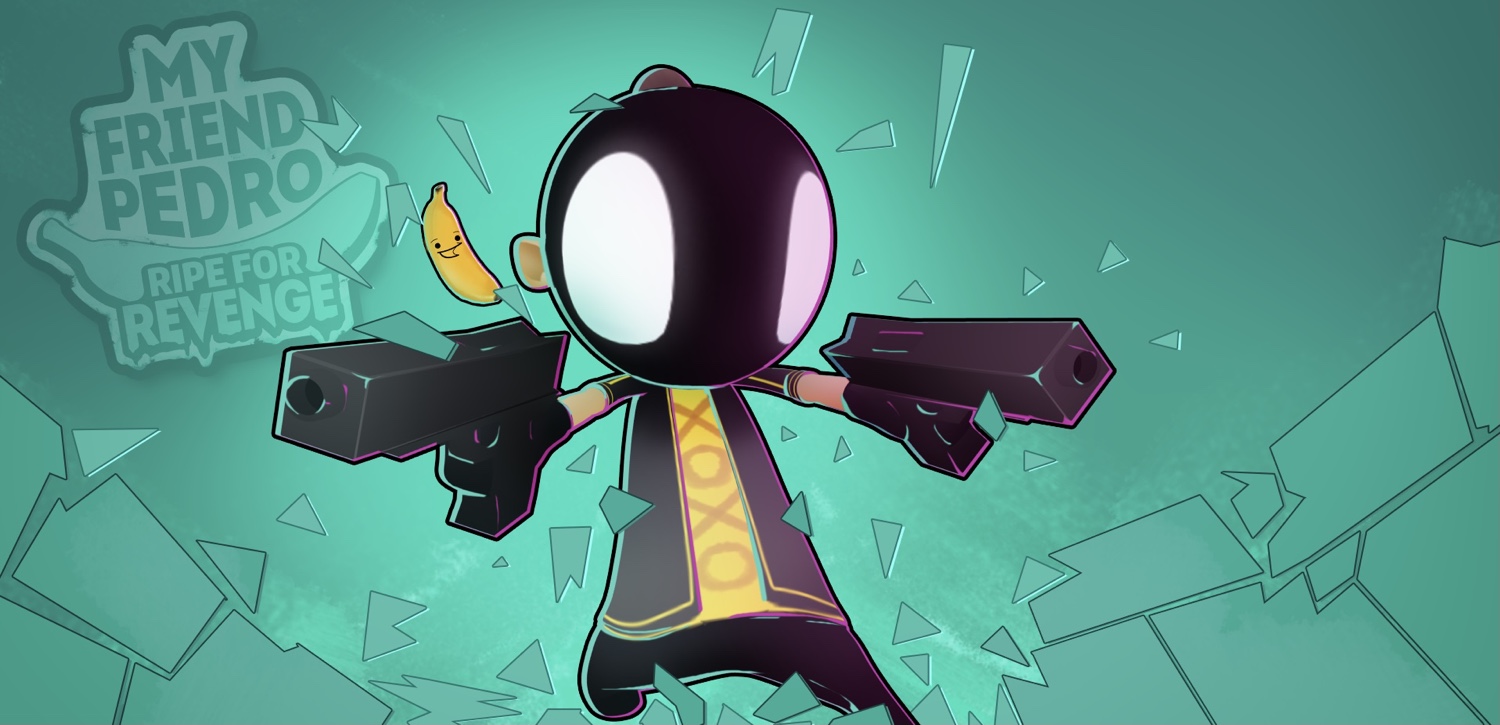My Friend Pedro: Ripe for Revenge
By: Devolver / DeadToast
Back when the original My Friend Pedro released in 2019, I was excited to play but also worried I wouldn’t be very good at it. I played some on my Nintendo Switch and enjoyed it, but struggled quite a bit due to my lack of practice with a controller and the fact that the game utilizes just about every button on there all at once. So, although I like the idea of it and enjoy watching others play, I didn’t make it very far myself. But when I heard the developers were working on a mobile adaptation, my interest piqued. I was hoping for a scaled-down version focused on touch controls, and that’s exactly what we got with My Friend Pedro: Ripe for Revenge.
For those unfamiliar with the series, Pedro is a talking banana. In Ripe for Revenge, his wife and kids have been kidnapped and you need to help save them. The game is broken up into three areas, with one fruit to rescue in each. Once again, you’re playing in slow motion, jumping and flipping around while you shoot bad guys before they shoot you. There are frying pans and mirrors to reflect bullets off of, carts and skateboards to ride, and plenty of other mechanics that are added at a steady pace to keep the game from getting stale. Unlike the console version, where you have a ton of different controls to master, Ripe for Revenge was built specifically for touchscreens. You simply pull back (or forward if you invert the controls) on either the left or right side of the screen to slow down time and create a trajectory that you aim at or over a wall. When you let go, you’ll jump to that spot. If there are enemies in sight, they’ll spot you and start shooting, so you need to quickly tap on them to shoot before then shoot you. You can also slide a finger to straight across the screen to slide through narrow passages. And that’s basically it. Everything you do in the game is a combination of those three controls, even in the first-person motorcycle levels.
If you’re especially good at the game, you can pretty much play it entirely for free. The way it works is you have three hearts that represent your health bar. When you run out of health, you die and start back at the tutorial and try to get further the next time. But if you purchase the single IAP to unlock checkpoints, you only need to restart the level you were on. I think that’s very fair monetization, and I personally would only play it with checkpoints, as I’m not skilled enough to avoid dying. That said, the premium version makes the hearts system feel weird, since you might start a level with only half a heart left and get hit once halfway through and die. I wouldn’t have minded a way to just restart a level with three hearts without having to die first. There’s an achievement for getting through the game without dying, but once I’ve already died I’m just focusing on each level individually. So there is that bit of disconnect between the health bar and the premium version of the game. Still, it’s not enough of a problem to ruin the experience for me.
The goal in each level is to get to the green door without dying, and you can mostly go at your own pace for a more relaxed experience. But those looking for a challenge might want to strive for three stars and a high score. If you move through the level quickly and kill enemies in close succession, a multiplier will keep growing. If you slow down or take too long to get to the next enemy, the multiplier will start dropping, making it harder to increase your score. So you’re rewarded for playing more skillfully, but not forced to. And besides the the no-death achievement, the premium version includes Blood Rush mode, which has a very short timer that counts down to zero, at which point you die. Killing enemies adds a few seconds to your timer, so you have to move even faster than in the regular mode. Personally, I found it too hard and quite on the second level. But I’m sure there are players out there who will appreciate the challenge, and it’s a nice addition for those who mastered the rest of the game. I won’t be trying for that or no deaths, but I do want to work on getting more stars on some levels. So even though it’s a short game, there’s plenty of replay value for any skill level.
My Friend Pedro: Ripe for Revenge is a superb example of how to adapt a series to mobile. It’s been pared down for touchscreens, but the quality hasn’t been sacrificed. There aren’t any silly consumables or other IAPs that normally take advantage of mobile players. Instead, it’s just a thoughtfully constructed version of My Friend Pedro that works well with touch controls. It still feels great to flip around shooting enemies and watching bullets fly when you hit a frying pan. There were a few levels near the end that gave me trouble, but I enjoyed the challenge of mastering them enough to pass, even if not to perfect them. Each level is also short enough that death doesn’t feel too bad if you’re on the premium version. There’s also nothing to lose, since the game is free to try. So what are you waiting for? Download Ripe for Revenge here and help save Pedro’s fruity family!




